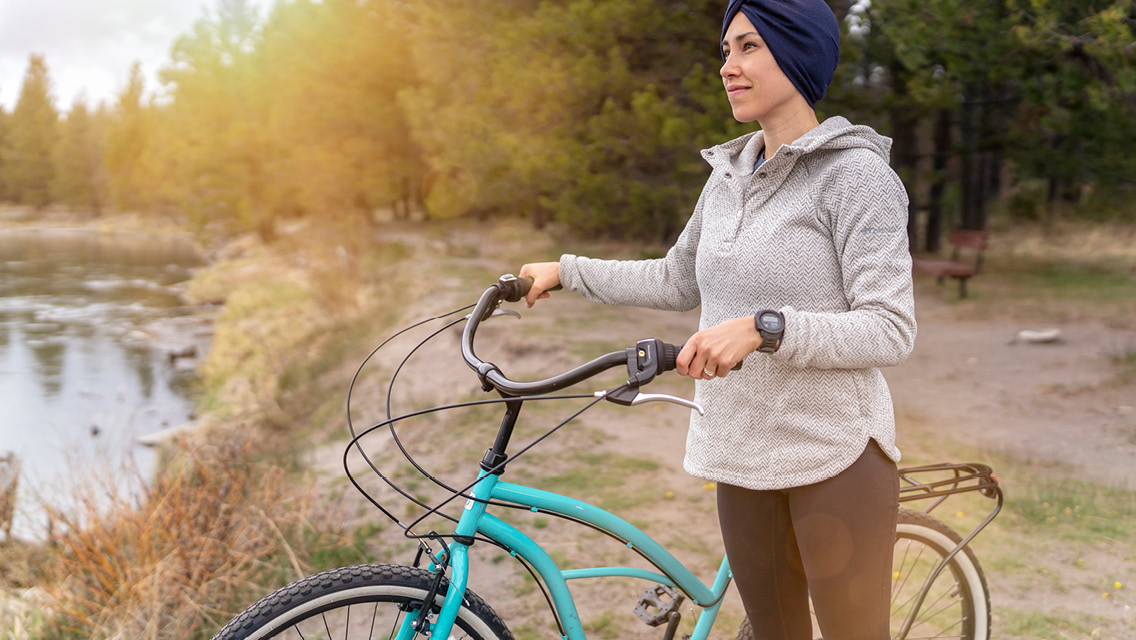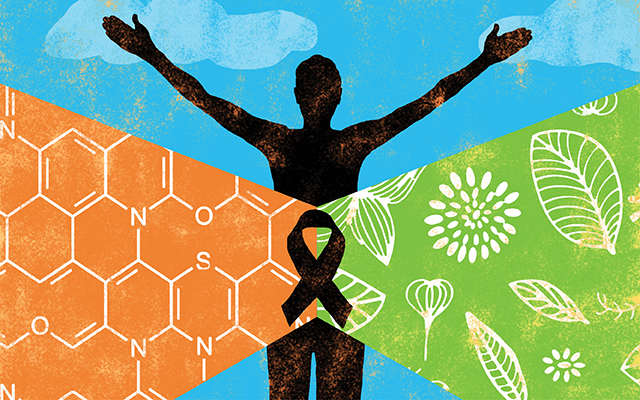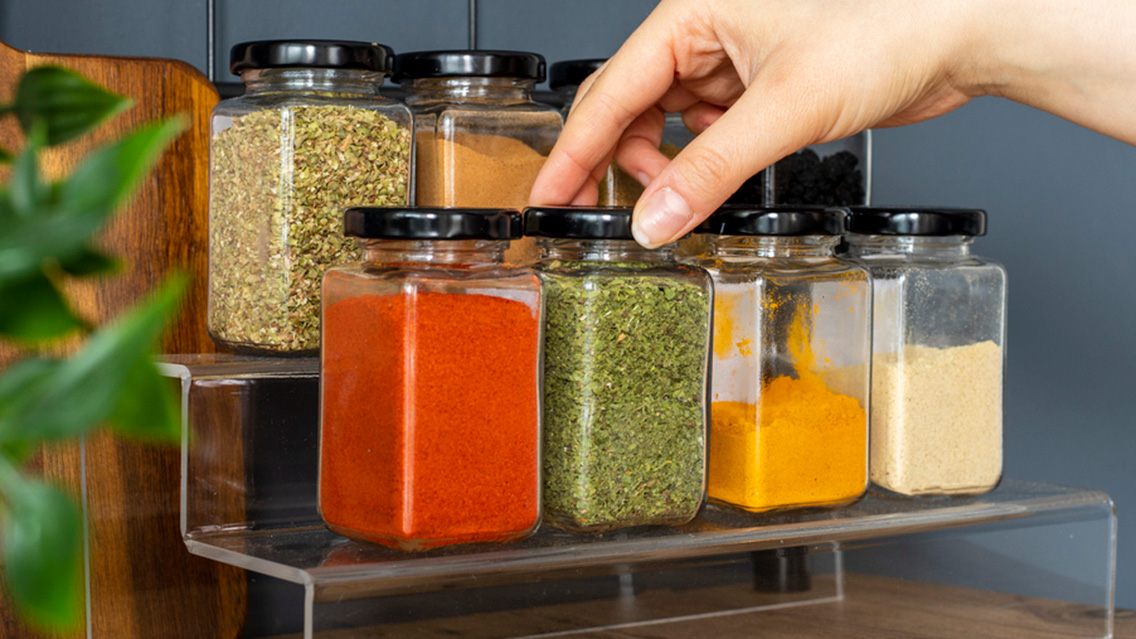Anna Schwartz, 44, is a natural athlete. As a nursing student, she competed in tennis, swimming and running. The only time she remembers hitting the brakes was 19 years ago, when, at the age of 24, she learned she had non-Hodgkin’s lymphoma, a cancer of the immune system, and her doctor told her to stop exercising. In many ways, his edict was worse than the treatment itself, she says. “I got fat, depressed and hopelessly out of shape.”
While still undergoing cancer treatments, Schwartz graduated from nursing school and landed a job working with cancer patients. She soon noticed that people who exercised, even if it was just pacing around their hospital rooms, did better physically and mentally than those who stayed in bed.
People who exercised, even if it was just pacing around their hospital rooms, did better physically and mentally than those who stayed in bed.
Bucking conventional wisdom, Schwartz started cycling, and, she says, “The effect was amazing.” Within days, her depression began to lift; within weeks, her athletic build started to reappear; and within a year, she completed a 15-day transcontinental bike ride. She soon traded her nurse’s uniform for a PhD in nursing and set her sights on researching the effects of exercise on cancer.
In the years since, she has set two world records in cycling and penned Cancer Fitness: Exercise Programs for Patients and Survivors. Today, she credits exercise with saving her life: “I was at the depths of despair, and exercise pulled me through.”
A cancer diagnosis is a life-altering blow for anyone, but for people who’ve dedicated themselves to years of exercise and eating right, the news can feel like a bodily betrayal. If you find yourself among the 1.4 million Americans slapped with a cancer diagnosis this year, your first impulse may be to post your athletic gear on Craigslist and curl up in bed with a pint of Ben & Jerry’s Chubby Hubby. Until recently, a lot of well-meaning doctors probably would have encouraged that approach, because many believed that cancer patients were too fragile to bother with exercise.
That laissez-faire attitude also dominated when it came to diet, says Dave Grotto, RD, an expert in cancer and nutrition and a spokes person for the American Dietetic Association. “Doctors would tell cancer patients, ‘Eat whatever you want now, and we’ll worry about it later.’ It was very shortsighted advice.”
In retrospect, the advice was also just plain wrong, at least according to a batch of new studies pioneered by researchers like Schwartz who’ve suspected all along that the fight against cancer is not most effectively won curled up with your favorite comfort food.
Clearly, every cancer case — and every individual — is different, so it’s important to follow your own instincts and the advice of the health professionals whom you most trust. But if you’re an otherwise healthy person living with cancer, these experts suggest you’d be best off putting down the ice cream, renewing your gym membership, and finding out what the latest science says about how tweaking your diet and staying on your feet can help you beat the “Big C.”
Support Yourself
“Exercise is one of the most important things a cancer patient can do to complement mainstream treatment,” says Barrie Cassileth, PhD, chief of integrative medicine services at the Memorial Sloan-Kettering Cancer Center in New York City. Her declaration is a far cry from the advice doled out just a decade ago, but experts are seeing eye-popping gains when cancer patients lace up their gym shoes.
Some of the most promising data yet on exercise and cancer appeared in the June 2007 issue of the Journal of Clinical Oncology. A prospective study followed nearly 1,500 early-stage breast cancer survivors for up to 11 years and found that those who ate a healthy diet and were physically active (the equivalent of walking at a moderate pace 30 minutes a day, six days a week), cut their chances of dying from the disease by 50 percent.
That’s the kind of stat that turns heads in the medical community. Says Cassileth, “Aside from a minor surgery to remove a small skin cancer [which greatly reduces the risk of dying from the disease], nothing has produced that kind of [life-saving] result.”
So that’s all well and good for cancer caught in its earliest, most-curable stage, but what if your cancer is more advanced? Although there is a gap in the data on exercise and sicker patients, once again, working out does appear to pay off.
When scientists at the University of Rochester and the University of Michigan recruited women with metastatic breast cancer for an exercise study, they knew they were breaking new ground. No researcher had ever sent people who’d wrestled with advanced cancer to the gym. So the researchers kept the group small, just 12 women, and limited the study to eight weeks. With caveats in place, the rest of the study safely pushed the women’s limits. Each thrice-weekly 60-minute workout combined aerobic activity, resistance training, and core-stability and flexibility exercises. At the study’s end, the numbers spoke for themselves: The women had upped their flexibility 100 percent, increased their balance by 30 percent and showed a 34 percent drop in cancer-related fatigue. Doctors may not be ready to prescribe weight training to people with advanced cancer, says Karen Mustian, PhD, the study’s lead author, but they are realizing that fitter patients are healthier patients.
While any time is a good time to start exercising, people with cancer who are fit from the get-go may have an edge over those who aren’t.
The same goes for people who are fit at the time of diagnosis. While any time is a good time to start exercising, people with cancer who are fit from the get-go may have an edge over those who aren’t. That’s because the more muscle you have at the start, the longer it takes for it to melt away.
In her research, Schwartz has found that people who are not active during cancer treatment tend to lose more of their “functional ability” (for example, the ability to do simple things like climb stairs and go grocery shopping). Those who do exercise remain stronger and more able to cover more ground faster.
Of course, none of this is to say that you should drag yourself to the gym or running path when you’re feeling lousy or your body is screaming to stay in bed. Schwartz emphasizes that answers to common questions, such as when and how much to exercise, will vary widely from person to person. The best thing to do, she says, is to let your body be your guide.
“Usually you’re pretty tired two to three days after chemotherapy, so you’ll want to reduce the intensity of your workout,” she says. “Once you’re feeling more energized, you can ramp it back up.”
Maintain Your Edge
One reason to exercise is to combat “wasting syndrome” (a.k.a. cachexia) — a huge health threat to people with cancer, especially of the lung, pancreas and gastrointestinal tract. Indeed, cachexia, which causes weakness and the loss of weight, fat and muscle, is a direct cause of death for as many as 40 percent of cancer patients, according to the National Cancer Institute.
“As soon as patients get deconditioned, they rest more; pretty soon they spend more time in bed, and eventually their quality of life suffers,” says Lee Jones, PhD, a cancer researcher with the Duke University Medical Center in Durham, N.C. “People who are fitter to begin with will naturally do better; that’s why, if you were active beforehand, you should keep it up if you can.”
“People who are fitter to begin with will naturally do better; that’s why, if you were active beforehand, you should keep it up if you can.”
Mustian, at the University of Rochester, likens regular exercise to putting funds aside for a rainy day: “It doesn’t matter what brings the rain, whether it’s cancer, fibromyalgia or multiple sclerosis,” she says. “The more physically fit you are, the better you’ll do when facing a serious illness.”
Interestingly, the growing stack of studies extolling the virtues of exercise for people with cancer hasn’t entirely explained whyit’s so beneficial. Cheryl Rock, PhD, a professor in the cancer prevention and control program at the University of California, San Diego’s Medical Center, points to three of the most plausible explanations.
For starters, exercise lowers some of the blood’s hormone levels, which is important because higher hormone levels act like fuel on the fire of certain cancers, such as those of the breast and maybe even colon. Exercise also slows the body’s ability to make substances that stimulate cell growth. That’s a good thing because cells reproducing willy-nilly can be cancerous. Finally, exercise lowers the body’s output of insulin, a hormone that can also goose cells into unwieldy reproduction. (See “How Exercise Heals.”)
When it comes to living with cancer, much is uncertain, but one thing is a sure bet: Exercise is only one piece of the puzzle — another is nutrition. Says Rock, “You can’t just rest on one lifestyle behavior.”
Nourish Your Body
When Tim Jensen, a husband and father of two in Minneapolis, learned that he, too, had non-Hodgkin’s lymphoma, he was shocked. Like Schwartz, he’d always been active, and, at 43, his first reaction was “Where did I go wrong?” “I thought people with cancer had done something to compromise their systems,” he says.
“I thought ‘Wow, I have cancer, and I’m a healthy guy. I must be the healthiest unhealthy person I know.’”
Although Jensen, now 45, had always been active, he’d never given much thought to his diet. “I ate everything and anything I could get my hands on,” he says with a chuckle. Postdiagnosis, Jensen shifted his approach and began making healthier choices.
Smart move, note the experts, who say we now know that eating a diet heavy on whole foods and light on processed fare is not only one of the best ways to arm yourself against cancer, it’s also a means of supporting the body through treatment as it helps to minimize side effects.
Good nutrition and carefully selected supplements can make conventional cancer treatments more effective and lower the level of toxins accumulating in the body during chemotherapy and radiation.
Good nutrition and carefully selected supplements can make conventional cancer treatments more effective and lower the level of toxins accumulating in the body during chemotherapy and radiation, says Keith Block, MD, cofounder and medical director of the Block Center for Integrative Cancer Treatment in Evanston, Ill. “The right diet is a critical component of care for someone who has cancer.”
After his diagnosis, Jensen gave up fast food, traded his nightly beer for a glass of red wine to boost his antioxidant intake, and gave up dairy foods (on the sheer chance it might help). The whole family switched to eating more organic produce, fish and free-range chicken. “In many ways,” he says, “I feel healthier now than I did before.”
Like most conventional nutritionists, cancer researcher Jones recommends that people with cancer stick to the “old” Food Guide Pyramid. That means striving daily for five to nine servings of fruits and vegetables; six to eight servings of whole grains; two to three servings of lean meats or vegetarian sources of protein, like beans and nuts; and limiting fat to 30 percent of daily calories.
Other cancer experts, however, see things differently. Many, for example, are keener on emphasizing produce. Since plant substances, called phytochemicals, can help the body knock cancer to its knees, Block asks his patients to down 10 to 12 daily servings of fruits and vegetables. (For more on the benefits and sources of phytochemicals, see “Phyto Power” in this issue.) That can feel like a whole produce aisle, he acknowledges, so he suggests supplementing with what he calls “green superfoods” — drinks made from concentrated forms of antioxidant-rich vegetables, such as cabbage, broccoli, leeks, red and yellow peppers, and tomatoes. In helping patients select their juices, Block encourages using organic vegetables that are free of contaminants and have measurable antioxidant activity.
Spare Your Muscles
Cancer patients should also prioritize protein. Grotto says protein is the No. 1 nutrient that people with cancer need, because many types of cancer, including colon, lung, kidney and liver, rob the body of lean tissue. Once muscle stores are depleted, the body will leach protein from the organs, which can further zap strength and undermine the immune system, which is headquartered in one of the body’s largest organs, the small intestine.
One of the easiest proteins for the body to digest is whey, a concentrated version of a protein found in milk. Whey protein is called “tissue sparing,” says Block, because it spares the tissue from further breakdown. “Many professional athletes use whey because it helps muscles recover and rebuild after a tough workout.”
Cancer can be caused by chronic inflammation, so it’s important to make dietary choices that won’t fuel the flames, says Block. Protein sources such as cheese, skin-on poultry and red meat contain pro-inflammatory fats — saturated and omega-6s, for instance — providing an environment that supports inflammatory conditions. They should be eliminated, Block says, or at least kept to a minimum.
On the flip side, healthier protein sources (salmon, flaxseed and walnuts) contain monounsaturated and omega-3 fats, which counter inflammation and may even help cancer patients stave off muscle wasting.
“You can take in lots of [protein], but the muscles won’t use it unless they need to.” So make sure you’re giving your body a reason to absorb what you’re feeding it.
Bottom line?
Limit the amount of animal protein in your diet. A 2005 study in the Journal of the American Medical Association found that people who ate the most red meat (2 to 3 ounces or more a day, depending on gender) were up to 40 percent more likely to develop colon cancer. It also showed that people who consumed the most processed meat (an ounce five to six times a week for men, two to three times for women) were 50 percent more likely to develop colon cancer and 20 percent more likely to get rectal cancer than people who indulged the least.
And there’s one more twist. Protein won’t get from the stomach to the muscles without a little help. Without exercise, the body won’t use the protein, says Jones. “You can take in lots of it, but the muscles won’t use it unless they need to.” So make sure you’re giving your body a reason to absorb what you’re feeding it.
Amplify Antioxidants
Next on the list of dietary must-haves are antioxidants. The body’s natural cancer fighters, antioxidants destroy free radicals, which are cellular vandals that tag the DNA of healthy cells and make them abnormal. With multiple hits, this can lead to out-of-control growth and proliferation, and potentially become cancerous. If you already have cancer, free radicals can drive it to become more aggressive. “Using lymph and blood vessels,” Block says, “tumor cells can travel and seed new locations — a process known as metastasis.”
The same substances that give fruits and vegetables their vivid hues, antioxidants patrol the bloodstream, putting the kibosh on free radicals before they can run amok. Remember the study of early-stage breast cancer patients who cut their risk of dying from the disease by 50 percent with diet and exercise? The women who fared best also spooned up at least five servings of fruits and vegetables each day.
“There’s not a lot about cancer you can control, including genetics,” says Rock, a coauthor of the study. “But we do know that by eating a diet high in fruits and vegetables, you can improve your prognosis.”
“We do know that by eating a diet high in fruits and vegetables, you can improve your prognosis.”
While antioxidants in whole foods help destroy the free radicals that can cause cancer, the benefits of antioxidant supplements are much less certain. Taken by as many as 87 percent of people with cancer, antioxidant supplements are highly controversial. Some experts worry that high-dose vitamins can monkey with chemotherapy treatment and, even worse, make cancer cells more powerful. “Americans tend to think if one vitamin is good, then 10 vitamins are better,” says Cassileth. “But it just isn’t the case.”
With cancer, as with most things, moderation has real merit. That’s why combining sensible nutrition and exercise with essential healthy-lifestyle habits, such as stress relief and getting enough sleep and emotional support, may be the very best way to stay strong both during treatment and beyond.
For inspiration, consider Tim Jensen: In the two years since starting his cancer treatment and changing his diet for the better, he has completed five triathlons. His message to people living with cancer? “Grab life by the horns, embrace every day as an adventure, and fight the battle to win.”
11 Health Tips for Living Strong With Cancer
1. Talk with your doctor about your exercise goals. She may want to monitor you more closely for lower-than-normal levels of blood cells. Too few white blood cells, red blood cells and platelets (blood-clotting cells) can increase your risk of anemia, infection and bleeding. None of these is dangerous, per se, but you may want to take extra precautions, such as avoiding activities that could lead to falling (and, hence, bleeding).
2. Meet with a physical therapist or exercise physiologist, at least for a few sessions. Most personal trainers don’t have the background to tailor workouts to the needs of cancer patients without some outside advice, says Anna Schwartz, PhD, a professor who holds the Scottsdale Healthcare Center research-endowed chair at Arizona State University. A physical therapist or exercise physiologist can show you (and your trainer) how to work safely and systematically around any physical limitations you may be facing.
3. Start slowly, says Schwartz. If you’ve been sedentary, build gradually; 10 minutes of walking every other day may be enough. Gung-ho exercisers should curtail workouts by 50 percent at the start of treatment. Then add time and intensity once you know how your body reacts to it, she says.
4. If you have to choose just one type of exercise, make it aerobic, says Schwartz. “If we lose our aerobic fitness, we can’t do things that are meaningful in life, like go for a walk or play with our kids.” So if you’re short on energy, consider a low-key swim, bike ride or walk. An active yoga class or interval-training circuit can get your blood pumping, too.
5. Keep track. Maintain an exercise log and record what you did, when you did it, how long you lasted, how hard you pushed, and how you felt during and afterward, says Schwartz. You’ll get a sense of accomplishment from seeing the log grow, plus you can show it to your physician as an accurate picture of your activities.
6. Know your limits. This isn’t a “no pain, no gain” scenario. If you’re feeling pummeled by chemotherapy side effects, such as nausea, fever, dizziness or shortness of breath, says Schwartz, by all means give yourself some time off. Recovery is your priority.
7. Stay hydrated. Cancer treatments can snuff out the body’s thirst signals, says Dave Grotto, RD, an expert on cancer and nutrition. Drink 8 to 12 cups of liquid a day. Water, fresh juices, green tea and clear broth are all good choices. If you need to pack on the pounds, consider smoothies (see No. 8), kefir or even milk shakes. Different cancers and cancer treatments affect individual metabolisms differently, so check with your physician.
8. Maximize nutrients. Get the most nutritional bang for your buck by slurping on what Grotto calls “powerhouse fruit smoothies.” Add whey protein to milk (or a dairy-free substitute), and add antioxidants by reaching for deep-hued fruit, such as blueberries, blackberries or strawberries.
9. Pop a daily multivitamin. Chemo-therapy depletes the body’s vitamin and mineral reserves. Look for multis with the full recommended dietary allowances of B vitamins, vitamin C and vitamin A, says Grotto. “These vitamins are the biggies that chemotherapy and radiation deplete.”
10. Live clean. People with cancer can be extra sensitive to toxins and irritants, so reduce your exposure to problematic chemicals by choosing organic produce and personal-care products when possible.
11. Take aim at inflammation. When you eat foods chock-full of sugar and bad fats, blood-sugar levels spike and the body’s internal environment becomes more inflamed, which can fuel certain cancers. Help your body defend itself against the disease by avoiding pro-inflammatory foods, such as sugar, high-fructose corn syrup, hydrogenated oils, white flour, red meats and processed-meat products (bacon, bologna, salami, etc.).




This Post Has 0 Comments